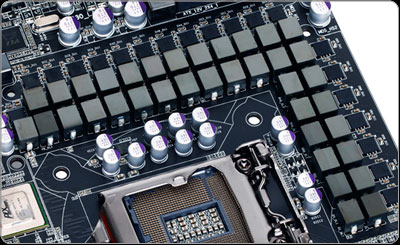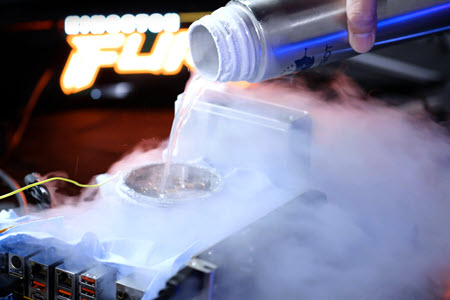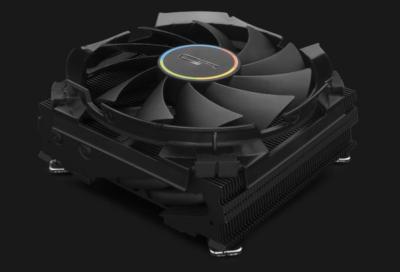CPU Power Phase Control – Understanding CPU Power Phase Control
In the world of computer hardware and overclocking, many factors determine the performance of a CPU. One crucial but often overlooked aspect is CPU power phase control.
CPU Power Phase Control, often called phase control, is a technology implemented on a computer’s motherboard to regulate the power delivery to the CPU. It ensures that the CPU receives a consistent and stable power supply.
In this article, we’ll delve into what CPU power phase control is, how it works, and why it matters to both enthusiasts and regular users.
What is CPU Power Phase Control?

CPU Power Phase Control, often referred to simply as “phase control,” is a technology implemented on the motherboard of a computer to regulate the power delivery to the CPU.
It determines how efficiently and precisely power is delivered to the CPU, helping maintain stability, reduce power wastage, and enhance overclocking performance.
How Does CPU Power Phase Control Work?
The power phase control of a CPU involves several components, including voltage regulators and power phases. Let’s break down the process of how it works:
1. Power Phases:
A CPU typically has multiple power phases for providing power to different chip parts. These power phases work together to ensure the CPU receives a constant and stable power supply. The more power phases a motherboard has, the more fine-grained control it can provide.
2. Voltage Regulators:
Voltage regulators, often integrated into the motherboard’s power delivery circuitry, help maintain the desired voltage levels. They ensure the CPU receives the right amount of power, which is essential for stable operation and performance.
3. PWM Controllers:
Pulse-Width Modulation (PWM) controllers play a central role in power phase control. These controllers adjust the duration of power pulses sent to the CPU, effectively regulating the power delivery. By varying the pulse width, PWM controllers can increase or decrease the power provided, offering dynamic control over the CPU’s power consumption.
Why Does CPU Power Phase Control Matter?
1. Overclocking:

For computer enthusiasts who want to push their CPUs to the limits, CPU power phase control is crucial. Overclocking involves increasing the CPU’s clock speed, which requires more power.
A well-implemented power phase control system ensures the CPU receives the extra power it needs while maintaining stability. This helps prevent overheating and damage to the CPU, ultimately extending its lifespan.
2. Power Efficiency:
Efficient power delivery is not only beneficial for overclocking but also for everyday use. By optimizing power phases and voltage regulation, CPU power phase control can reduce power wastage and heat generation. This translates into lower electricity bills and a longer lifespan for your computer components.
3. Stability and Reliability:
In addition to performance gains, a well-regulated power phase control system enhances the overall stability and reliability of a computer system. It helps prevent voltage fluctuations and electrical noise, which can cause crashes or even permanent damage to the CPU.
4. CPU Longevity:
Constantly fluctuating power levels can lead to a shortened lifespan for your CPU. With proper phase control, your CPU receives a consistent and reliable power supply, which can contribute to a longer-lasting processor.
The Multifaceted Role of CPU Power Phase Control in Modern Computing:
1. Fine-Tuning Overclocking:
Overclocking, increasing a CPU’s clock speed beyond its stock settings, is a common pursuit for enthusiasts seeking more performance. Properly implemented CPU Power Phase Control is essential for this endeavor.
It allows for fine-tuning of power delivery to meet the increased demands of an overclocked CPU. The more phases a motherboard has, the more control an overclocker has over power distribution, minimizing voltage drop and ensuring a stable, high-speed operation.
2. Enhanced Cooling:

Efficient power phase control also has a positive effect on cooling. CPUs generate heat when they operate, and precise power delivery can help manage this heat more effectively.
By minimizing voltage fluctuations, the CPU can run cooler, making it easier for cooling solutions like air or liquid coolers to maintain a manageable temperature. This not only ensures system stability but also extends the life of CPU cooling components.
3. Load Balancing:
Advanced motherboards often implement load-balancing algorithms in their CPU Power Phase Control. These algorithms distribute power evenly among the CPU’s cores, ensuring a balanced workload.
This can be particularly advantageous for multi-core processors, as it prevents one core from drawing excessive power while others remain underutilized.
4. Dynamic Voltage and Frequency Scaling:
Modern CPUs often employ Dynamic Voltage and Frequency Scaling (DVFS) to adapt to the workload. In such cases, CPU Power Phase Control becomes even more critical. The motherboard must adjust power phases in real-time to provide the CPU with the required power, which can vary from moment to moment. This dynamic control is vital in laptops, where battery life is a concern.
Frequently Asked Questions:
1. How Does CPU Power Phase Control Affect Overclocking?
CPU Power Phase Control plays a vital role in overclocking by allowing fine-tuning of power delivery. It ensures the CPU receives the necessary power when running at higher clock speeds, minimizing voltage fluctuations and ensuring stable operation during overclocking.
2. What Are Power Phases In CPU Power Phase Control?
Power phases are individual power delivery circuits on a motherboard that provide power to different CPU parts. More power phases offer finer control over power distribution and reduce voltage sag, which is crucial for overclocking and system stability.
3. Does CPU Power Phase Control Impact Power Efficiency?
Yes, CPU Power Phase Control can significantly improve power efficiency. By regulating power delivery and minimizing voltage fluctuations, it reduces power wastage heat generation and ultimately lowers electricity bills.
4. How Does CPU Power Phase Control Affect CPU Cooling?
Efficient power phase control can help manage CPU heat more effectively. It minimizes voltage fluctuations, allowing the CPU to run cooler. This, in turn, makes it easier for cooling solutions like air or liquid coolers to maintain an optimal temperature.
5. Can I Adjust The CPU Power Phase Control Settings In The BIOS?
Yes, most modern motherboards offer BIOS settings to adjust CPU Power Phase Control. Enthusiasts and users who fine-tune their systems can access these settings to optimize power delivery according to their specific requirements.
Conclusion
CPU Power Phase Control is a critical component in modern motherboards that has a profound impact on CPU performance, power efficiency, stability, and longevity.
Whether you’re an overclocking enthusiast or a regular computer user, understanding and utilizing this technology can help you get the most out of your CPU while ensuring it operates optimally.
When choosing a motherboard, it’s essential to consider its power phase control capabilities, as a well-designed system can make a significant difference in your computing experience.
Sources:
- https://linustechtips.com/topic/983480-cpu-phase-control-onoff-when-overclocking/
- https://www.overclock.net/threads/power-duty-control-power-phase-control.1686041/
- https://www.hisevilness.com/articles/technology/amd-overclocking-terminology-faq.html?showall=1
- https://www.reddit.com/r/overclocking/comments/aoxq1f/on_an_asus_mobo_is_it_ok_to_leave_cpu_power_duty/
